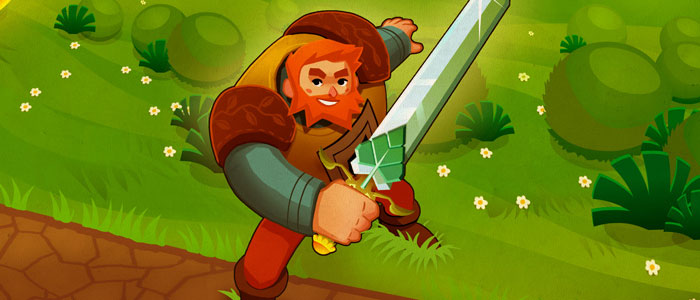[tab:Review]
When we received Forix 2 for review, I immediately loaded up the YouTube video as I had never heard of the game or its predecessor. I immediately recognized the core concept of the gameplay from my youth. Back in the day when arcades were still a common sight, there was a game called Qix. The game challenged you to fill in sections of a square playing field by moving at right angles to enclose and capture area. Qix looked to be inspired by an Etch-a-Sketch with some moving hazards thrown in for good measure. The goal was to capture 75 of the territory before moving on to the next stage. This concept has been used since, most recently in Bully: Scholarship Edition’s Art Class minigame. None, though, have taken it to the level that Nemesys has in Fortix 2.
The goal of the game is not to capture a majority of the playspace, instead, there are shields that must be collected and towers that must be destroyed. It does not matter how much area you reclaim from the Evil Wizard Xitrof, just that you survive and accomplish these goals. At the end of Fortix 1, the Evil Wizard was vanquished. Somehow, he has escaped to ravage the land with orcs, a variety of dragons, blood bats, and more. As you venture forth from the safety of the base line to reclaim territory, you’ll be dodging cannons and arrows pelted at you from the towers you must destroy. When you are off the solid border between your territory and enemy ground, the glowing lines trailing behind you are vulnerable. This makes reclaiming land a balance between capturing small blocks and risking a long journey. You will be reminded often to be conservative as projectiles and beasts collide with your line, erasing your unfinished reclamation effort, and sending you back to the base line. The rewards, though, for taking large chunks of the map can be grand, yielding big point bonuses.

The core mechanic of capturing pieces of the map drives everything in Fortix 2. You can position yourself to capture towers, but it is a risky proposition since the distance between the cannon and your line is short. Instead you can draw a box around a catapult, capturing it to destroy an enemy bombardment point. Monsters can also be fenced in, but it is often a tricky endeavor, especially as you begin encountering the more aggressive types of dragons. As you progress through the game, the battlefield shifts gradually from wide open spaces to narrow passageways that you must traverse from end to end and back again in order to pick up Atari Adventure-styled keys in a variety of colors (no mutant duck dragons are present, though), which open locked gates. These advanced stages require a great deal of strategy, planning, timing, and luck. Even the base line, which is a safe haven for the first half of the game, becomes treacherous, as monsters traverse it to reach you. You’ll often get put in the position of having to jump off the border for a split second to dodge a blood bat before returning to avoid a dragon. These moments are tense and a little frustrating, but pulling it off provides a constant sense of satisfaction.
Thankfully, power-ups appear frequently, represented by a star icon. You never know which boost you’ll get whether it’s a speed enhancement; an extra life; a shield; or a precious “stop,” which comes in projectile, monster, and everything flavors. There are quite a few different buffs and each one will prompt you to change your strategy on the fly to make the most of it.
The graphics are deceptive. They are very cute, with everything having a lighthearted storybook feel to it. It doesn’t take long to learn, though, that the adorable bone dragon will get your scent and ruin your careful plans. There are three different areas that you’ll pass through, each with different color pallets. It is important to pay attention to where you are walking as water, swamp, and fortress terrain will all slow you down at varying degrees. It’s always obvious which of the objects are impermeable without the flight powerup. I never found myself surprised when running into a wall.

The music is appropriately medieval sounding and the effects of your catapults firing and destroying towers are hearty. I particularly loved the chime warning you that a powerup was about to run out. It wasn’t because the effect was particularly interesting, but rather the sound mix was such that it sounded like it was coming from somewhere different than the rest of the sounds. I never missed it and was never caught unawares. It’s little touches like this that prevent the game from ever feeling unfair or confounding. You’ll probably have to try some of the levels, of which there are 30, a couple of times before you refine your plan of attack, but the game is up front about its intentions and it doesn’t ever seem to cheat.
Controls are precise, with a number of options. Using the keyboard, you can move your hero with the arrow keys. You can also click with the mouse, which is less precise and not advised for a game that requires sudden movements. Gamepads are supported, also.
Fortix 2 is both a throwback and an innovation. It takes a formula pioneered decades ago, puts a fantasy story and theme over it, and perfects the concept with clever and challenging level design. Be warned, this game is extremely challenging, even on the easiest of the four difficulty levels. I had a great time with Fortix 2 and look forward to the upcoming DLC.
Review copy provided by publisher.
[tab:Screenshots]
[tab:END]
